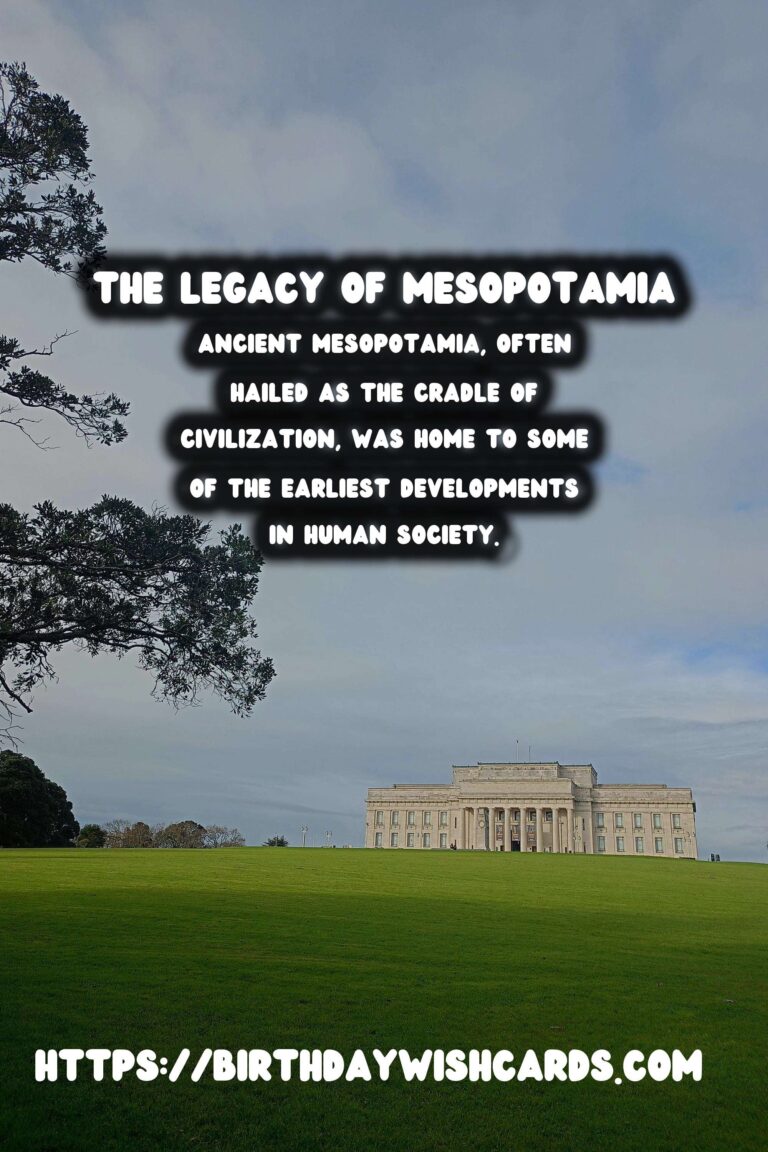
Introduction
Ancient Mesopotamia, often hailed as the cradle of civilization, was home to some of the earliest developments in human society. Among its many contributions, the establishment of a formal legal system stands out as one of the most significant. Understanding the legacy of Mesopotamia’s legal innovations gives us insight into the evolution of law and governance in human history.
The Origin of Laws in Mesopotamia
Mesopotamia cultivated one of the first complex societies, necessitating the creation of structured guidelines to maintain order and justice. This need led to the development of codified laws that governed people’s behavior, transactions, and interactions.
One of the earliest and most famous sets of laws from Mesopotamia is the Code of Hammurabi, devised by the Babylonian king Hammurabi around 1754 BCE. This code serves as a primary source of understanding Mesopotamian law, highlighting principles of justice that persist to this day.
The Code of Hammurabi
The Code of Hammurabi is a comprehensive document consisting of 282 laws. These laws cover various aspects of daily life and address issues such as trade, labor, property, family relations, and civil behavior.
Perhaps the most well-known aspect of the code is its use of the ancient principle of lex talionis, or the law of retaliation, encapsulated in the phrase ‘an eye for an eye’. While this might seem harsh by modern standards, it was a significant step in shifting retribution from private vendettas to state-administered punishment.
The Structure of Mesopotamian Legal Systems
The legal systems in Mesopotamia were supported by a structured judiciary, including roles for judges and legal scribes. Scribes played a crucial part in maintaining records and ensuring legal matters were documented accurately.
Court proceedings were public, which helped ensure transparency and accountability. Decisions from these courts were expected to be impartial and based on fact, guided by the legal codes.
The Influence of Mesopotamian Law on Modern Legal Systems
The influence of Mesopotamian law is evident in many modern legal principles and systems. Concepts such as contractual agreements, property rights, and many forms of civil litigation have their roots in Mesopotamian practices.
Moreover, the concept of state-administered justice as seen in the Hammurabi Code laid early groundwork for the development of centralized legal systems used in contemporary societies today.
Conclusion
Ancient Mesopotamia’s contribution to law is invaluable. The development and codification of legal principles not only served the societies of their time but also laid the groundwork for future civilizations. These early systems of law reflect the enduring human quest for justice, equality, and societal order. As we continue to study these ancient codes, we gain a deeper appreciation for the complexity and sophistication of early Mesopotamian society and its far-reaching influence.
The legacy of Mesopotamian legal innovation stands as a testament to their ingenuity and understanding of governance, offering a timeless reflection on the foundations of justice and law.
Ancient Mesopotamia, often hailed as the cradle of civilization, was home to some of the earliest developments in human society. The Code of Hammurabi is a comprehensive document consisting of 282 laws.
#Mesopotamia #AncientLaws

